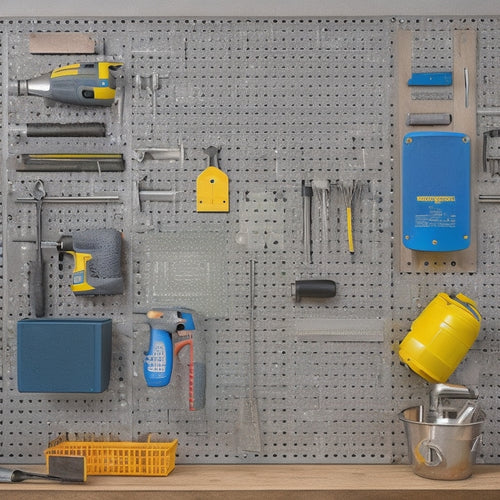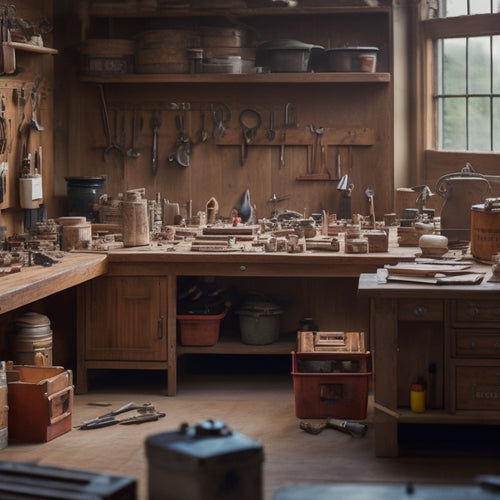
Bicycle Repair Mastery Unleashed
Share
To achieve bicycle repair mastery, one must grasp the intricacies of components, precision techniques, and essential tools. Understanding frame alignment, wheel truing, and brake caliper alignment is essential for a safe and efficient ride. Precision tools like torque wrenches and thread restoration techniques are important for accurate repairs. A well-stocked toolbox and proficiency in skills like wheel truing and bearing adjustment are also necessary. By combining technical knowledge with hands-on expertise, one can harness their full repair potential and take their skills to the next level, revealing the secrets to a perfectly tuned bike.
Key Takeaways
• Mastering frame alignment, wheel truing, and precision spoke tension adjustment is crucial for a safe and high-performance ride.
• Understanding brake, gear, and bearing maintenance requires specific knowledge to prevent component failure and ensure smooth operation.
• Precision alignment of components, thread restoration, and accurate torque specification are essential techniques for expert-level repairs.
• A well-stocked toolbox with specialized tools, such as torque wrenches, is vital for making precise adjustments and preventing component damage.
• Proficiency in skills like wheel truing, bearing adjustment, and brake pad replacement is necessary for comprehensive and efficient repairs.
Mastering Bicycle Components
When working on a bicycle, understanding the various components and their functions is essential to performing effective repairs and maintenance. A solid grasp of bicycle parts and terminology is the foundation upon which this knowledge is built.
A masterful understanding of frame alignment and welding techniques guarantees a sturdy and reliable ride. Meanwhile, wheel truing and precise spoke tension adjustment are critical for peak performance and safety.
Precision Repair Techniques
Cyclists and mechanics depend on precision repair techniques to guarantee that every component is correctly aligned, tightened, and assembled to achieve peak performance and safety. This attention to detail is essential in making sure that the bike operates smoothly and efficiently.
To achieve precision repair, mechanics must master techniques such as:
-
Precision alignment of components, including the frame, fork, and wheels, to ensure proper fit and function.
-
Thread restoration using techniques like thread chasing and tapping to restore damaged threads.
-
Accurate torque specification to prevent over- or under-tightening of bolts and nuts.
Essential Tools and Skills
Mechanics relying on a well-stocked toolbox and honed skills can tackle even the most intricate repairs with confidence and precision. A thorough set of tools is essential, including box- and open-end wrenches, ratchet drives, torque wrenches, adjustable wrenches, pliers, screwdrivers, and hammers.
Proper use of torque wrenches and calibration is vital to avoid damaging components. Understanding mechanical advantage in tools and tasks enables mechanics to apply the right amount of force, making repairs more efficient. Torque calibration guarantees accurate application of force, preventing damage to sensitive components.
Frequently Asked Questions
How Do I Prevent Corrosion on My Bike's Aluminum Components?
She prevents corrosion on her bike's aluminum components by applying a waterproof grease or corrosion inhibitor to exposed areas, ensuring frame protection, and regularly cleaning the bike to minimize aluminum oxidation.
What's the Best Way to Clean and Lube a Dirty Chain?
Did you know 90% of chain wear occurs in the first 500 miles? To clean and lube a dirty chain, she scrubbed it with a degreaser, rinsed, and reapplied lube, ensuring smooth gear shifting and minimizing wear on other components.
Can I Use WD-40 to Silence Squeaky Bike Parts?
She debunks WD-40 myths, identifying squeaky culprits like dry pivot points, worn bearings, and loose parts, and recommends targeted lubricants instead, ensuring precise problem-solving and peak bike performance.
How Often Should I Inspect and Maintain My Bike's Brake Pads?
Did you know 75% of bike accidents are caused by faulty brakes? She inspects her bike's brake pads every 300-500 miles, replacing them when worn down to 1-2mm to guarantee ideal brake wear and pads that grip, not slip.
Are There Any Eco-Friendly Alternatives to Traditional Bike Lubricants?
She explores eco-friendly alternatives to traditional bike lubricants, opting for plant-based lubricants and eco-safe options that reduce environmental impact, providing a sustainable solution for cyclists while maintaining performance and protection.
Related Posts
-

Best Organizing Tools for a Clutter-Free Space
You're on a mission to change your cluttered space into a peaceful oasis, and you're looking for the best organizing ...
-

How to Hang a Pegboard in 5 Easy Steps
You'll hang a pegboard in 5 easy steps by first preparing the wall, ensuring it's sturdy and free of obstructions. Ne...
-

Top 7 Parts Tray Organizers for Productivity
You can optimize your workspace and enhance productivity with the right parts tray organizer, which can help you cate...


